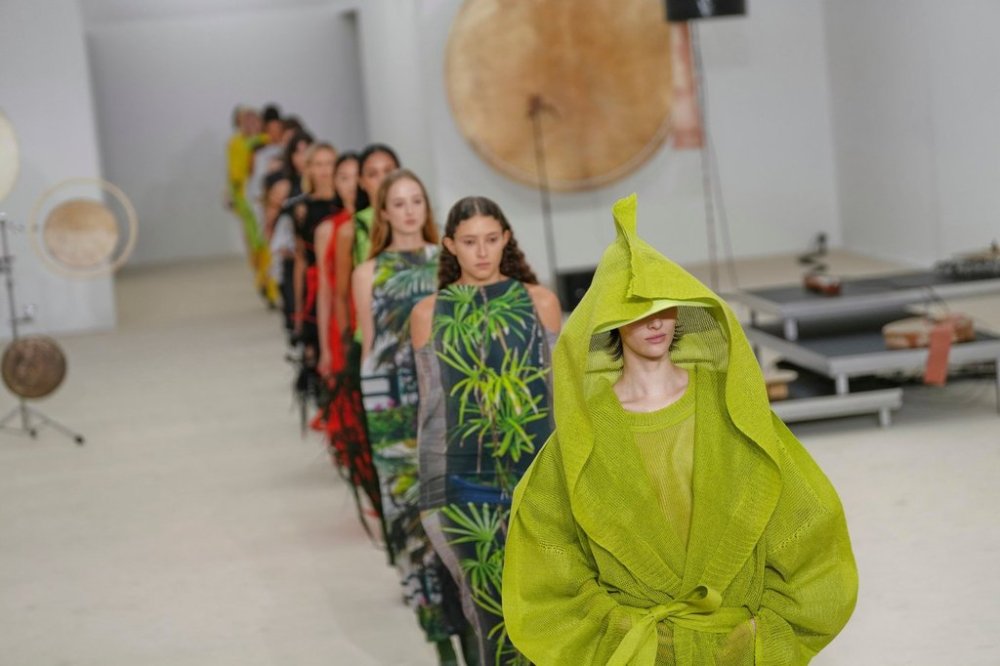Issey Miyake imagines clothes with a will of their own at Paris Fashion Week
Advertisement
Read this article for free:
or
Already have an account? Log in here »
To continue reading, please subscribe:
Monthly Digital Subscription
$0 for the first 4 weeks*
- Enjoy unlimited reading on winnipegfreepress.com
- Read the E-Edition, our digital replica newspaper
- Access News Break, our award-winning app
- Play interactive puzzles
*No charge for 4 weeks then price increases to the regular rate of $19.00 plus GST every four weeks. Offer available to new and qualified returning subscribers only. Cancel any time.
Monthly Digital Subscription
$4.75/week*
- Enjoy unlimited reading on winnipegfreepress.com
- Read the E-Edition, our digital replica newspaper
- Access News Break, our award-winning app
- Play interactive puzzles
*Billed as $19 plus GST every four weeks. Cancel any time.
To continue reading, please subscribe:
Add Free Press access to your Brandon Sun subscription for only an additional
$1 for the first 4 weeks*
*Your next subscription payment will increase by $1.00 and you will be charged $16.99 plus GST for four weeks. After four weeks, your payment will increase to $23.99 plus GST every four weeks.
Read unlimited articles for free today:
or
Already have an account? Log in here »
PARIS (AP) — Issey Miyake ’s spring 2026 show at Paris Fashion Week posed a question: what if clothing were alive?
Booming electronics inside the Centre Pompidou venue Friday accompanied an opening of crisp monochrome shirts and high-waisted trousers, shoulders drawn upward into a compact line, as if shrugging to the guests.
The concept arrived quickly and clearly: in this collection the wearer served the garment’s will, not the other way round.

Silhouettes remapped the body — trousers integrated sleeve-like panels at the sides that impacted the model’s stance, and single-sheet wraps and supple faux leathers seemed to “grow” around the torso. A netted, scuba-like look packed with toylike objects turned accumulation into profile, as if the clothes themselves consumed and imposed contour.
Jackets with displaced openings forced new ways of entering and moving. Black-and-white tailoring stayed taut while shoulders lifted seemingly of their own accord, creating a springy, insouciant line.
Branded shoe boxes telegraphed the ongoing footwear collaboration as models circled a DJ in the round, but on the body the idea was autonomy: garments that oriented posture, choreographed gait, and treated the air between cloth and skin as living volume.
Founded by Issey Miyake in 1970 in Tokyo, the iconic house became famous for reframing the concept of fashion as material engineering — innovative pleating, paper and washi blends, single-piece construction — yielding light garments with sculptural force. Under current designer Satoshi Kondo, that legacy continues in movement-driven form and an ongoing dialogue with art and performance.
At Pompidou, those signatures read cleanly: weightless volume, precise cutting, textures that shifted with motion, reinforced by a live soundscape that treated textiles as active matter.
The caveat is familiar. Concept occasionally edged toward prop theater — the boxes, the stuffed netting — and risks overshadowing everyday use. Commercial clarity can blur when silhouettes impose rather than accommodate.
Even so, this was among the label’s more fashion-forward recent outings: controlled in line, vigorous in idea, and most persuasive when the garments led and the body followed.

